The metropolis that never was: Eerie photos show outlines of planned California city that’s still state’s third-largest by acreage – but which is largely just empty desert scrub
Creepy photos have revealed what remains of a planned Golden State metropolis called California City that never came to fruition.
The ghost town would have been 200 square miles and would have been California’s third largest city after LA and San Diego, but 65 years later the city is still largely barren.
Aerial photos show an extensive network of roads etched through the Mojave Desert, intended for the suburbs that were never built.
Today, only 15,000 people live in California City — mostly retirees and workers at the nearby Edwards Air Force base — just a fraction of the 400,000 citizens developers had hoped to attract when construction began in the late 1950s.
It comes as a group of billionaires plan to create a utopian, “walkable and green” city in Solano County to rival San Francisco, following on from the doomed project.
Creepy photos have revealed what remains of a massive new California city that never came to fruition
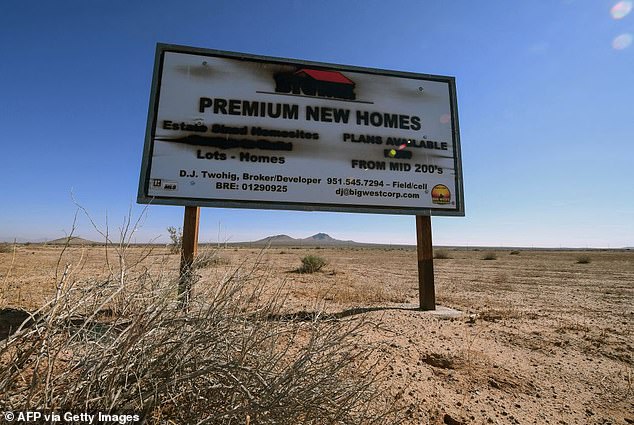
The ghost town would become the Golden State’s third-largest city based on its 203 square miles (203 square kilometers), but 65 years after it was created to become a thriving metropolis, it remains largely barren.
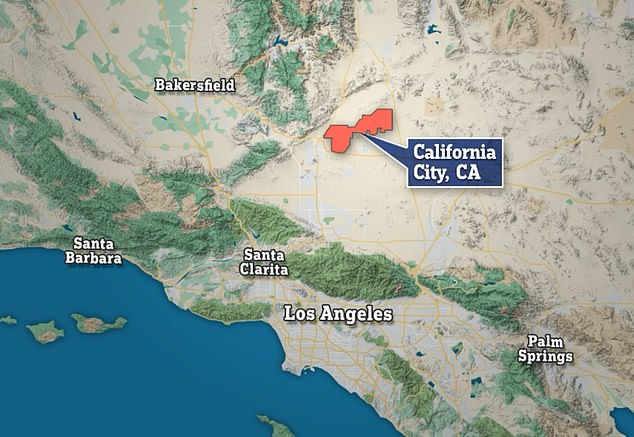
California City is still the state’s third-largest metropolis by area, but is home to only a fraction of its target population, with about 15,000 residents
Located 100 miles northeast of LA in Kern County in the Antelope Valley, California City consists mostly of named roads but no houses.
Lincoln Boulevard, Rutgers Road and Aristotle Drive are surrounded by creosotes and brush, but they remain unpaved.
The wasteland was meant to rival LA when it was purchased by Nathan Mendelsohn in 1958.
The Columbia University professor turned real estate developer mapped and carved out streets and neighborhoods where he hoped people would buy lots to build homes and businesses during California’s population boom.
Streets are named after cars, such as Cadillac Boulevard, Chrysler Drive and Dodge Street, or universities, such as Stanford Avenue, Columbia Road and Georgetown Street.
It was even planned that the city would have a 160-hectare ‘Central Park’, similar to that in Manhattan.
Although Mendelsohn sold more than 52,000 lots, few of those buyers developed their properties, according to Business Insider.
In the 1970s, only 1,300 people lived in California City and even now the city has not reached the population Mendelsohn expected or hoped for, and there are still 118,000 acres of vacant land.
Residents of the ghost town largely live near the park. Most streets remain unpaved.
The city has its own school district and public bus service, but has no supermarket chain or hotels, the Los Angeles Times reported.
Most people who live in California City work at Edwards Air Force Base or a nearby prison.
Photographer Noritaka Minami was interested in the planned but undeveloped city for photos exhibited with the Aperture foundation.

The Wasteland was meant to rival LA when it was purchased by Nathan Mendelsohn in 1958
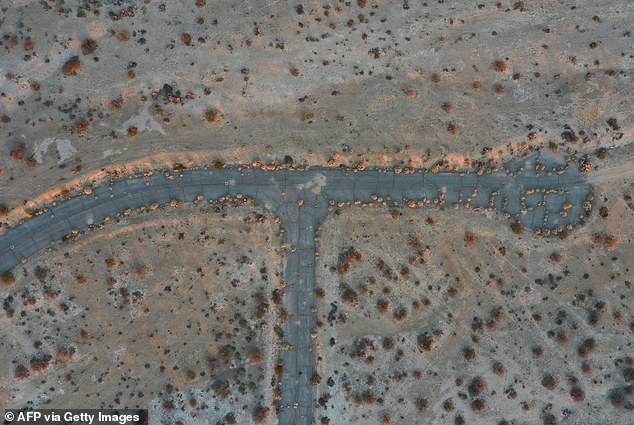
Aerial photos show extensive network of roads etched through the Mojave Desert, intended for the suburbs that were never built
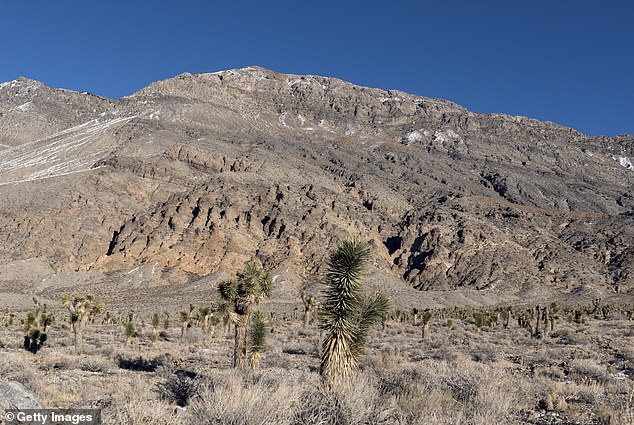
Most people who live in California City work at Edwards Air Force Base or a nearby prison
“The fact that these desert streets remain largely empty to this day should raise the question of whether Mendelsohn’s proposed wetland wonderland was actually realistic or could ever have been sustainable in an environment like the Mojave Desert, Minami told Co. Design.
Professor Shannon Starkey, who has spent years researching the city, said it was expected to have a population of 400,000 in its optimistic early days.
“For lack of a better description, (developers) really understood and presented California City as an alternative and potentially competitive city with Los Angeles,” the associate professor of architecture at the University of San Diego told me. SFGATE.
Starkey said the city took about a year to design, with planners envisioning a city center that could accommodate 100,000 people, and six satellite suburbs with between 30,000 and 50,000 residents.
It would even be complete with a golf course and a Central Park with an artificial lake. Photos show that these two aspects have at least been built.
To celebrate the park’s opening, Mendelsohn flew over the lake in a helicopter and dropped 35 gallons of water from New York City’s Central Park to christen the new location.
But the plans fell apart when the expected ‘land rush’ – new residents buying up plots to settle in the new metropolis – never happened.
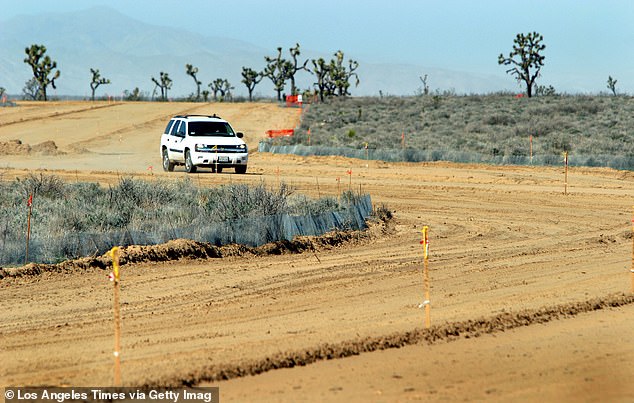
Located 100 miles northeast of LA in Kern County in the Antelope Valley, California City consists mostly of named roads but no houses.

The city’s design took about a year, with planners envisioning a city center that could accommodate 100,000 people, and six satellite suburbs with between 30,000 and 50,000 residents.
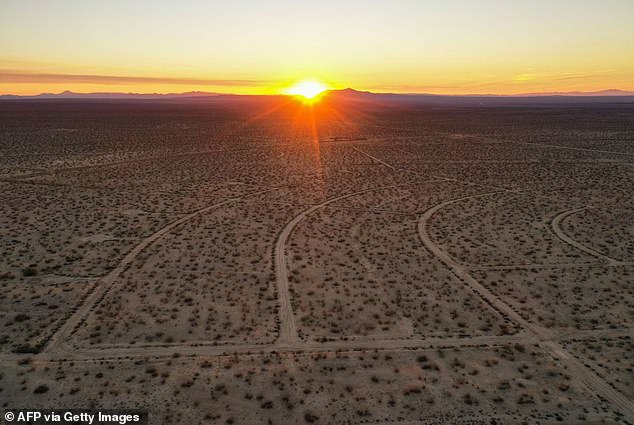
The city’s plans fell apart when the expected ‘land rush’ – new residents buying up plots to settle in the new metropolis – never happened
And in the 1970s, things went from bad to worse when people who had bought land sued the owners, claiming they had sold it at too high a price.
The owners were hit with a civil penalty by the Federal Trade Commission for false advertising, forcing them to pay $4 million in refunds to more than 14,000 customers.
Today, the desert metropolis of nearly 15,000 people is home to the largest population it has ever had, made up of retirees and workers at nearby Edwards Air Force Base and mines in the neighboring city of Mojave.
Meanwhile, in Solano County, Silicon Valley investors who have bought large tracts of land have said they now have all the land they need to create a new “walkable and green” utopian city.
Flannery Associates LLC has spent more than $800 million in recent years discreetly buying up areas around Travis Air Force Base in Solano County for a project called “California Forever.”
The billionaires behind the group, whose identities were eventually revealed in late August, acquired approximately 814 additional hectares in October, meaning they now own more than 53,000 hectares in the region.
